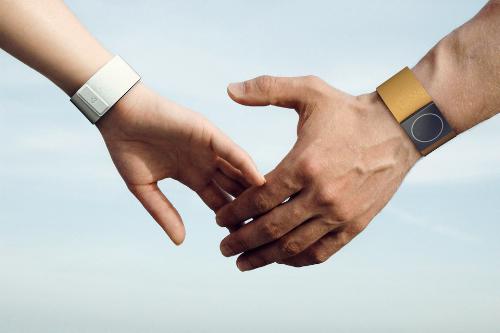
What’s so different about Embrace?

What’s so different about Embrace?
1. It focuses on a specific biosignal, skin conductance, that can be used to understand stress and sleep patterns, and—as recently published by their Chief Science Officer, Rosalind Picard of MIT— help detect epileptic seizures.
2. It’s the first commercially available device to offer any layperson what researchers and physicians have had access to in the laboratory for years. It’s a clinical grade psychophysiology device that brings quality data to consumers at an affordable price point.
3. It gives personalized autonomic nervous system (“stress”) feedback. The app allows each wearer to set an individual threshold of what determines a stress response and the device provides a vibration in order to alert the wearer that his or her body has exceeded it.
4. It’s a step toward social wearables — you can program your device to buzz yourself and a buddy when your stress threshold is hit.
5. It’s beautiful, sleek and stylish.
Embrace has two things going for it that herald it as vanguard. One is its scientific leadership in Prof. Rosalind Picard. Picard has been building, testing, and wearing sensable devices since the early 1990’s at the MIT Media Lab. She wrote the book (literally) on Affective Computing, and was a founding member of the first IEEE committee on Wearables in 1998. The other key quality is its gorgeous design. The team that put this together has married engineering and function into a beautiful package that looks like something you’d really want to wear even if it were just a piece of lovely jewelry.
The kind of information this device provides is something anyone would find useful and relevant. Anyone can benefit from learning what in life increases personal stress. For a child, a spouse, one’s self – it is hugely insightful. A mother can see what part of her daughter’s day is most stressful. A wife can see what activates her husband most. People can see if one commute is less stressful than another. A teacher can see if an autistic student is under or over aroused. If your child has ADHD, or if you do, you can try an experiment to understand whether or not getting some exercise raises your skin conductance levels better better than taking your medication.
And of course if you or someone you love has epilepsy, it can be life-saving to get an alert with a seizure. And there is mounting evidence that biofeedback with EDA can decrease seizure frequency.
As a long-ago student of Dr. Picard’s, I’ve had the unusual experience of watching this grow from the beginning. The first wearable we built together showed the power of this signal to change the conversation between people, groups and audiences. Now, Embrace is here to change that conversation for everyone.